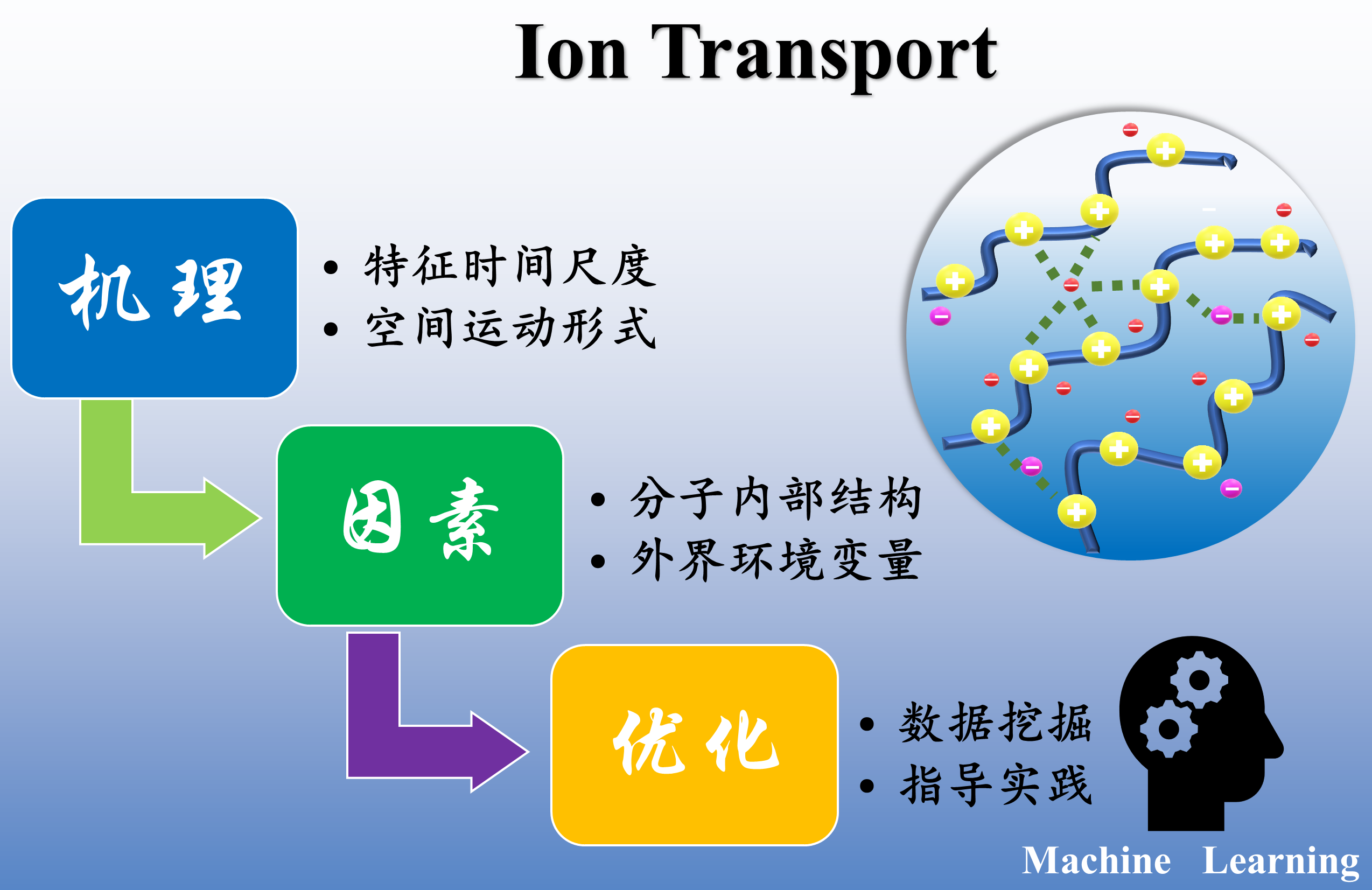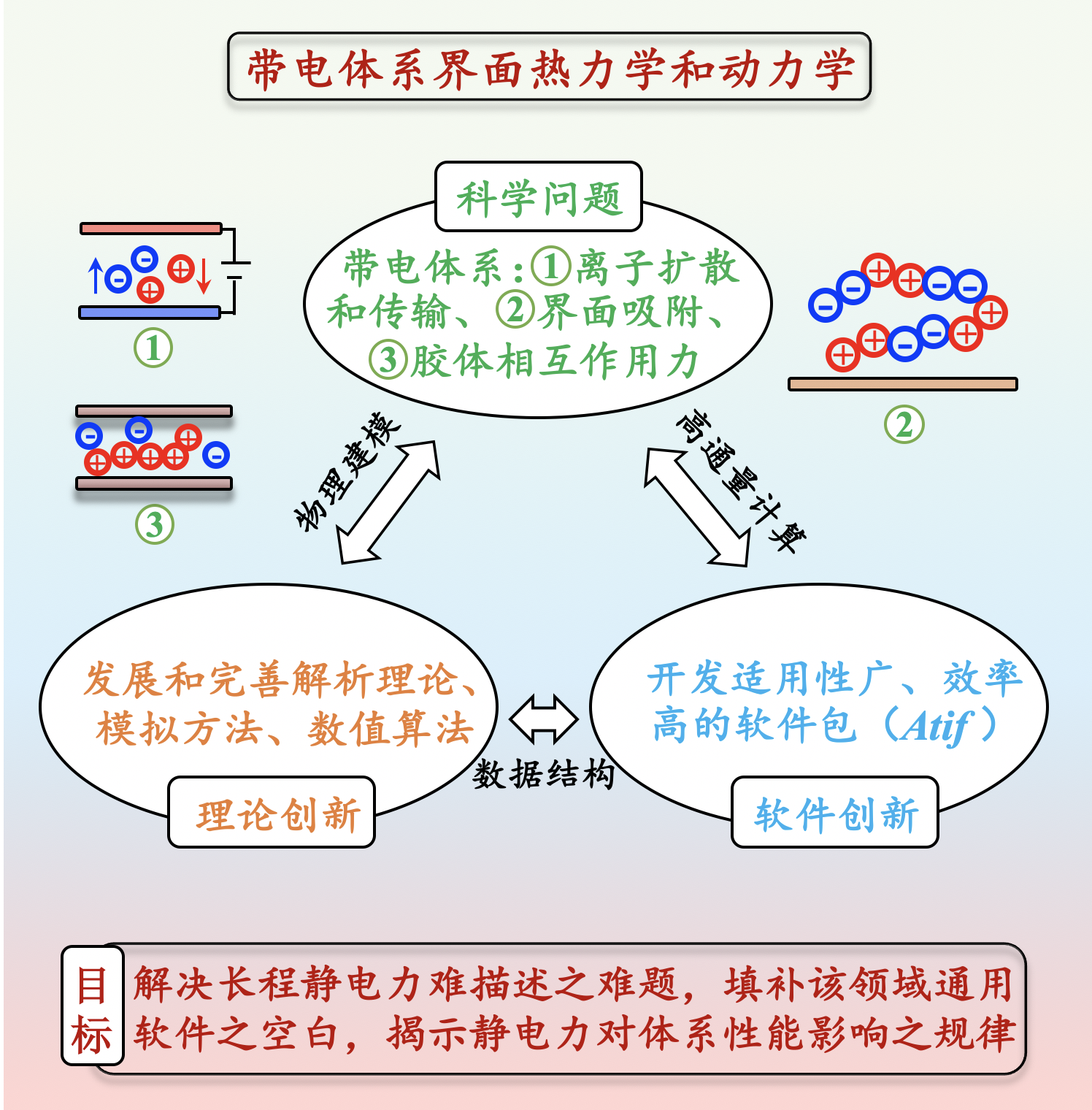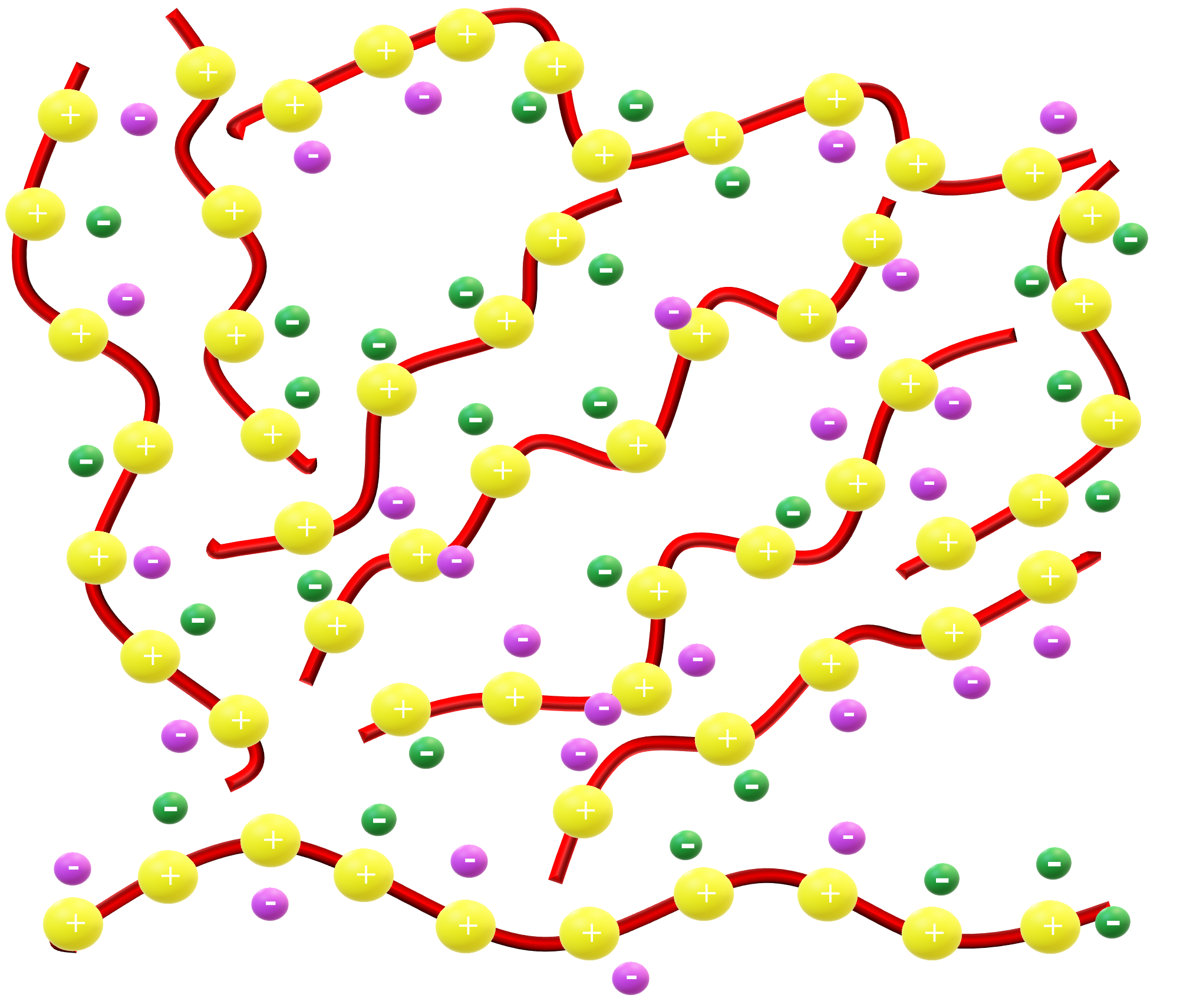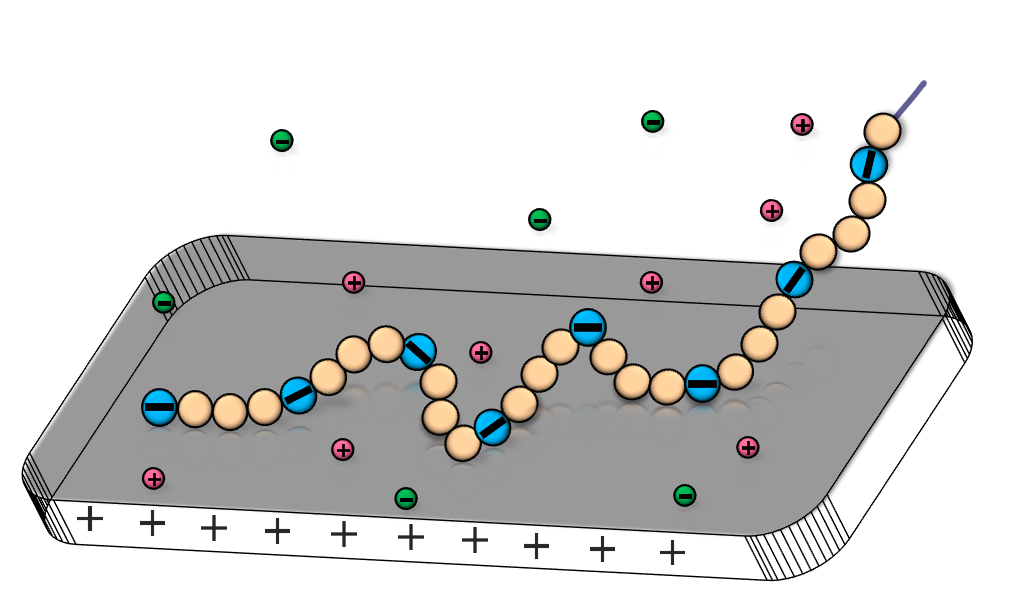Research
Our group develops and employs classical statistical mechanics theory, thermodynamics theory, and artificial intelligence models, combined with computer simulation methods, to understand/solve scientific problems in soft matter interface system, predict macro properties of polymer materials, and help reverse design of high-performance polymer materials.
Ion transport in electrolytes/polyelectrolytes
We use various methods including molecular dynamics simulations, statistical mechanics as well as quantum chemical calculations, etc. to study the thermodynamic and kinetic problems in complex systems including ionic liquids and concentrated electrolyte solutions. Hope to provide new ideas for the design and optimization of new-type ionic batteries.
Polymerized ionic liquids (PILs) possess parts of the physical and chemical properties of both ionic liquid and polymers. Compared with ionic liquids, the processability, impermeability and mechanical stability of PILs are better. Moreover, the charged monomers on the backbone are tunable. Therefore, PILs are regarded as potential polymer electrolytes. We utilize theoretical methods and molecular dynamics simulations to study the thermodynamic and kinetic problems in the PIL systems, and grasp the transportation mechanisms of counterions in the system to guide the design and preparation of high-performance polymeric electrolytes.

Thermodynamics and dynamics of complex fluids near/on interfaces
As an important component of soft matter systems, (poly)electrolytes are ubiquitous in nature. Systematic studies of the thermodynamic and dynamic problems of (poly)electrolytes near/on interfaces are of great significance for understanding the interaction mechanisms between biomacromolecules and surfaces of cell membranes/organelles, and guiding the design and preparation of high-performance polymer adhesives and dispersants.
Interfacial properties of sequence-defined polymer systems. Sequence-defined polymer refers to the monodisperse macromolecule composed of different physical and chemical properties monomers arranged precisely in a specified order. For example, nucleic acid (DNA/RNA) which are sequential precise polymers composed of four nucleotides (A, T, G, C) are the important component of life. Recently, our team focuses on the systematic research on the thermodynamic and dynamic properties of sequence-defined polymer interface systems, using theoretical and molecular simulation methods.
Properties of dielectric inhomogenous interface systems. The image charge effect as a result of dielectric inhomogeneity has a significant effect on the adsorption of polyelectrolytes at interfaces. For examples, in an aqueous solution, polyelectrolytes or other charged particles are subjected to repulsive forces of image charges near biofilms (whose dielectric constant is much lower than that of aqueous solutions), and are attracted by image charges near metal substrates (whose dielectric constant is much larger than that of aqueous solutions) instead.
The influence of charge regulation on polyelectrolytes systems. Charge regulation is a common feature in charged systems (especially in biological systems), including pH response, charge redistribution, etc. One of the main tasks of our team is to develop theories and computer simulation methods, to consider the charge regulation and study its effect on the phase and interfacial properties of polyelectrolytes.



